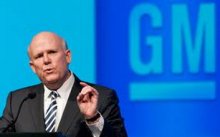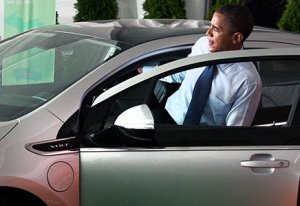 Alternative energies are having an extremely tough time of it lately – from alternative fuel vehicle fueling and charging infrastructure to development of renewable energies – public and private funding has been drying up for many projects. Biofuels have been going through the wringer – much of it tied into the struggle over corn ethanol being used as E10 in gasoline and potentially as E15 if it survives the political battle. Much of the controversy is also tied into the federal Renewable Fuel Standard, which many analysts think is quite unrealistic for bringing advanced biofuels into transportation at a large scale level of production. A few of the public companies have lost their market value as disappointed investors have pulled out and put their money into something else like smartphones and mobile applications.
Alternative energies are having an extremely tough time of it lately – from alternative fuel vehicle fueling and charging infrastructure to development of renewable energies – public and private funding has been drying up for many projects. Biofuels have been going through the wringer – much of it tied into the struggle over corn ethanol being used as E10 in gasoline and potentially as E15 if it survives the political battle. Much of the controversy is also tied into the federal Renewable Fuel Standard, which many analysts think is quite unrealistic for bringing advanced biofuels into transportation at a large scale level of production. A few of the public companies have lost their market value as disappointed investors have pulled out and put their money into something else like smartphones and mobile applications.
Then there’s Vinod Khosla, one of the leading venture capitalists out there these days. Khosla hasn’t backed away from biofuels and is dropping down more cash on cellulosic biofuel producer KiOR Inc., He committed personally to fund up to $25 million in cash to KiOR, in addition to the $25 million that would come from his firm Khosla Ventures.
KiOR just announced that it will be doubling production at its Columbus, Miss., cellulosic fuels facility through setting up a second plant incorporating its own commercially proven technology. The company estimates that the development project will cost it $225 million; it will take 18 months to complete after breaking ground and the company is raising equity and debt capital to fund the construction project.
Khosla and other investors have seen biofuel companies take a deep dive on the market. Amyris Inc., Gevo Inc., and KiOR experienced collapse since their initial public offerings. Operational and technical delays have caused investors to pull away. It’s possible the Khosla could be part of bringing KiOR back and his company has made sizable investments in Amyris and Gevo.
Khosla believes biofuels could play a vital role in America’s economic prosperity and security. “The biofuels industry, if properly funded, is also capable of creating more jobs, with unsubsidized economics, than traditional fossil oil technology and putting every mill town in America with a shut down paper mill back in business as a thriving community,” Khosla wrote in the KiOR statement.
The US Dept. of Agriculture has played a key role in supporting biofuels and has now placed a new offering on the table. Farmers and rural businesses in 22 states are being offered incentives to help reduce energy consumption and increase the use of renewable technologies; a number of biofuels- and biomass-related projects are part of the federal program. The Rural Energy for America Program (REAP) program provides a grant for up to 25% of eligible project cost plus additional funding in the form of a loan guarantee.
Some of the available grants include those supporting flexible fuel pumps in California; E85 and biodiesel blender dispensers in Iowa; equipment to efficiently manufacture biodiesel and a biomass burner in Indiana; and two separate biomass boilers in New York.





